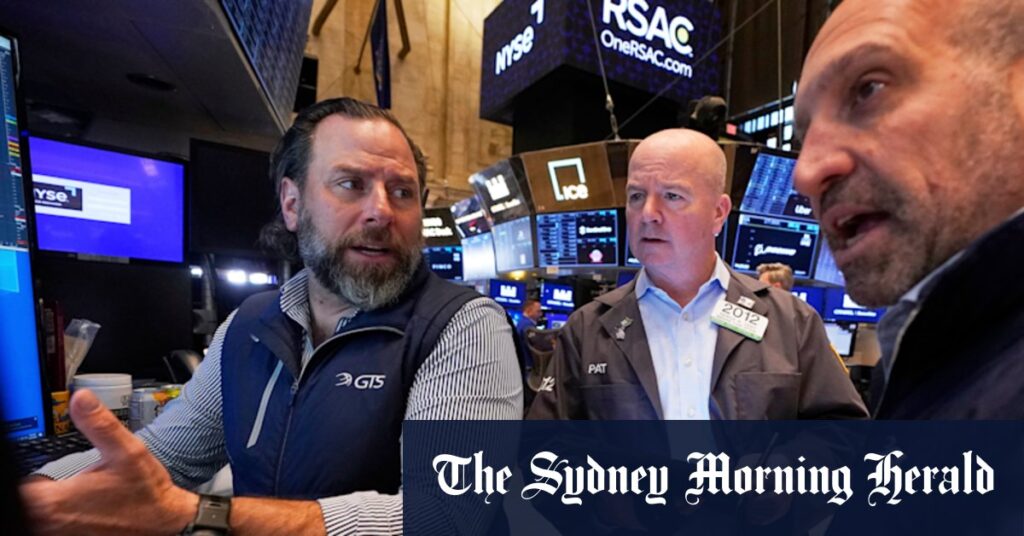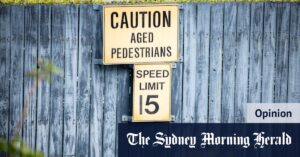
The Australian sharemarket experienced a significant boost by midday on Friday, driven by a rally on Wall Street following a subdued inflation report from the United States. The S&P/ASX 200 climbed 70 points, or 0.8%, reaching 8875 just after midday AEST. Financials and materials sectors led the charge, with nine out of eleven industry sectors in positive territory.
The rally was notably supported by the big four banks, with Westpac spearheading the gains with a 1.5% increase. National Australia Bank, Commonwealth Bank, and ANZ followed closely, each rising by 1.3%. Mining shares also saw an uptick, with iron ore giants BHP, Rio Tinto, and Fortescue posting gains of 0.9%, 0.6%, and 0.2% respectively. Gold stocks benefited from a rise in the safe haven’s price, with Northern Star and Newmont up by 0.6% and 1.4% respectively.
However, the energy sector lagged behind, weighed down by a retreat in oil prices overnight. Woodside and Santos saw declines of 2.3% and 2.1% respectively. Meanwhile, Virgin Australia shares rose by 2.2% in early afternoon trading, following the airline’s annual report revealing former CEO Jayne Hrdlicka’s departure with a substantial payout exceeding $50 million.
Wall Street’s Influence on ASX
Overnight developments in the US markets played a crucial role in the ASX’s performance. The S&P 500 rose 0.8%, marking an all-time high for the third consecutive day. The Dow Jones and Nasdaq composite also saw gains, rising by 1.4% and 0.7% respectively. These movements were influenced by easing US Treasury yields after the release of key economic reports.
The reports, some of the last before the Federal Reserve’s upcoming meeting, indicated a potential interest rate cut, the first of the year. A rise in unemployment benefit applications suggested an increase in layoffs, adding to concerns about the job market’s health. Wall Street’s hope for a controlled economic slowdown hinges on the Fed’s response to these signals.
Inflation and Interest Rates
The US inflation report showed consumer prices rising by 2.9% in August compared to the previous year, slightly up from July’s 2.7%. This rate exceeds the Fed’s 2% target but aligns with economists’ expectations. The Fed faces a delicate balance between managing inflation and addressing a slowing job market, with interest rate adjustments being its primary tool.
“Right now, inflation is a key subplot, but the labour market is still the main story,” said Ellen Zentner, chief economic strategist for Morgan Stanley Wealth Management.
President Donald Trump’s tariffs have previously deterred the Fed from cutting rates, fearing potential inflation spikes. However, the current economic environment may necessitate a shift in strategy.
Market Reactions and Future Outlook
In the US, Warner Bros. Discovery surged by 37.3% following reports of a potential acquisition by Paramount Skydance, which itself rose by 15.6%. Conversely, Oracle’s shares fell by 6.2%, a minor setback after a significant surge the previous day due to excitement over AI technology contracts.
The ASX’s performance reflects broader market trends and investor sentiment shaped by global economic indicators. As the Federal Reserve’s meeting approaches, market participants will closely watch for any shifts in monetary policy that could impact both local and international markets.
The Australian dollar was trading at US66.58¢ at 12.18pm AEST, highlighting the currency’s response to the evolving economic landscape.
As global markets continue to react to economic data and policy decisions, the ASX’s trajectory will likely mirror these broader trends. Investors remain vigilant, balancing optimism with caution as they navigate the complexities of the current financial environment.







